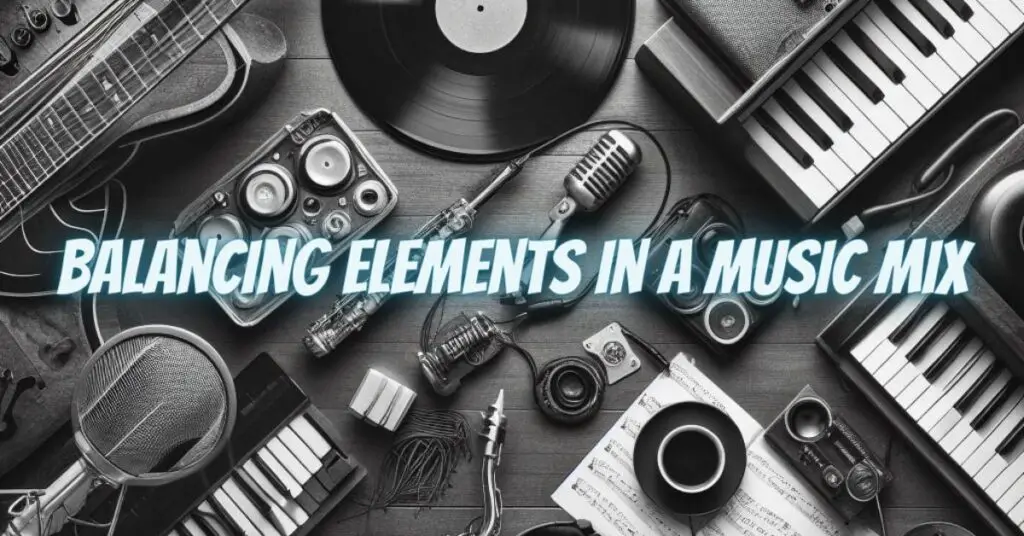Audio mixing is a delicate art that involves balancing various elements to create a cohesive and pleasing sonic experience. Among the critical considerations in this process is determining what should be the loudest in a mix. Achieving the right balance between different elements is essential for creating a professional and engaging sound. In this article, we will explore which elements are typically the loudest in a mix and the factors that influence this decision.
- Vocals:
- Lead Vocals: In most music genres, the lead vocals take the center stage and are often the loudest element in the mix. They carry the melody and convey the lyrics, making them a focal point for the listener.
- Backing Vocals: Background or harmony vocals are usually mixed at a slightly lower level than lead vocals to support and complement the main vocal performance.
- Drums and Percussion:
- Kick Drum: The kick drum typically plays a prominent role in the mix, providing the foundation and rhythm. It is often one of the loudest elements, especially in genres like rock, pop, and dance music.
- Snare Drum: The snare drum carries the backbeat and is generally mixed prominently to drive the rhythm and energy of the track.
- Bass:
- Electric Bass: The electric bass provides low-end support and groove to the mix. It’s mixed at a level that maintains a strong presence without overwhelming the other elements.
- Lead Instruments:
- Guitars, Keyboards, and Synthesizers: Lead instruments, like electric guitars or synths, can take on a lead role in the mix, but their loudness can vary depending on the song and genre. They are typically mixed at a level that allows them to cut through the mix without overshadowing vocals or other key elements.
- Key Supporting Elements:
- Other Instruments: Instruments like acoustic guitars, pianos, and horns may have a significant role in the mix, and their loudness is adjusted based on their importance within the arrangement.
- Orchestral Elements: In orchestral or classical music, the relative loudness of instruments within the orchestra is carefully orchestrated to create dynamics and expressiveness.
- Sound Effects and Ambience:
- Sound Effects: Sound effects, whether they are cinematic soundscapes or subtle environmental textures, are mixed at levels that complement the mood and atmosphere of the track.
- Ambience: Reverb and delay effects play a crucial role in the overall sonic space. These are adjusted to provide a sense of depth and space without overpowering the dry elements.
Factors Influencing Loudness Decisions:
- Genre and Style: Different genres have unique conventions for loudness. For example, rock and pop music often feature prominent drums and electric guitars, while classical music focuses on orchestral dynamics.
- Artistic Vision: The artist’s or producer’s vision for the song influences loudness decisions. Some songs may intentionally feature softer vocals or louder instrumental solos to create specific emotions.
- Lyrics and Message: In songs where lyrics convey a critical message, the vocals are often mixed louder to ensure the listener can clearly hear and connect with the words.
- Arrangement: The arrangement and instrumentation of a track also play a significant role. A busy arrangement may require more careful balancing to ensure all elements are audible.
- Listening Environment: Consideration of the listening environment and playback systems is essential. A mix should sound balanced and engaging on a variety of devices, from studio monitors to earbuds.
Achieving the optimal balance between elements in a mix is a nuanced process that depends on the artistic vision, genre, arrangement, and message of the music. In most cases, lead vocals, drums, and key supporting instruments play a significant role and are mixed to ensure they are clear and engaging. Ultimately, what should be loudest in a mix is a creative decision that serves the overall goals of the music and reflects the artist’s intent.


